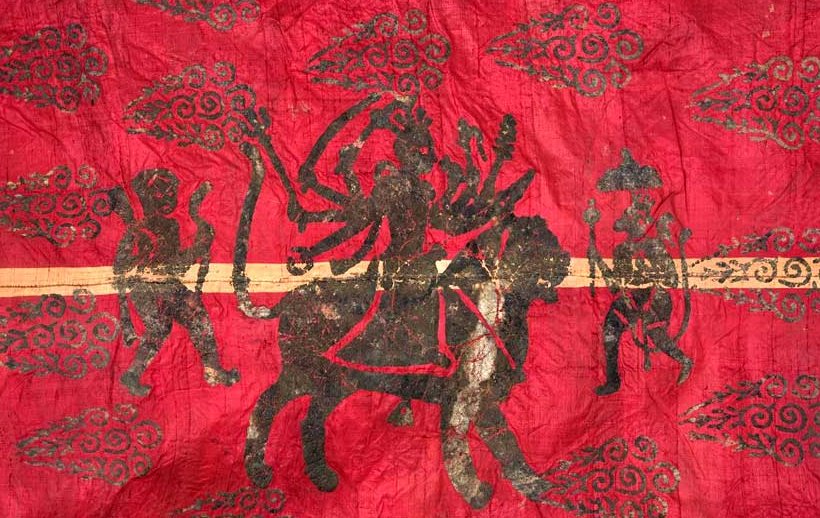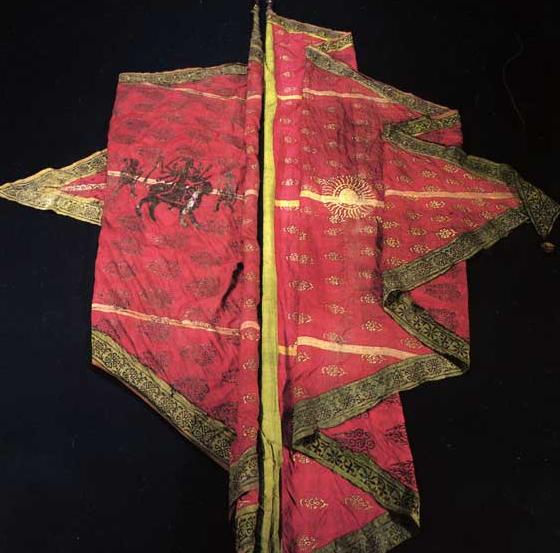Battle-flag of Maharaja #Ranjit Singh of Punjab (1780 - 1839) had images of Devi दुर्गा Durgā with हनुमान् Hanumān and #लक्ष्मण Lakṣmaṇa. 

कौमारी Kaumarī the power of Kārtikeya, the commander-in-chief of the devas is also on the flags, as is वाराही Vārāhī, the power of Varāha, the boar-headed form of Vishnu.
Kaumari rides peacock, holds spear etc.
Maharaja Sher Singh 1842, by Alexis Soltykoff, British Library
Kaumari rides peacock, holds spear etc.
Maharaja Sher Singh 1842, by Alexis Soltykoff, British Library

• • •
Missing some Tweet in this thread? You can try to
force a refresh






